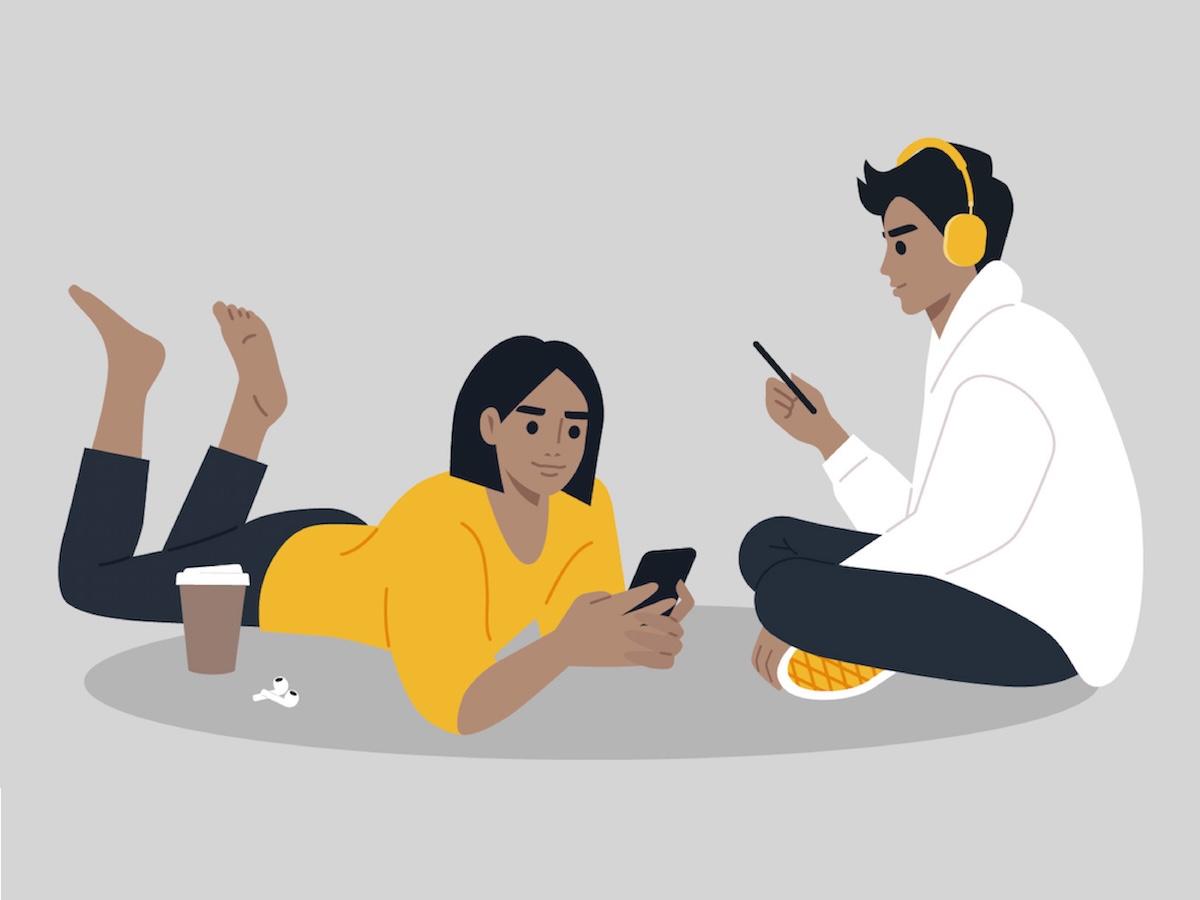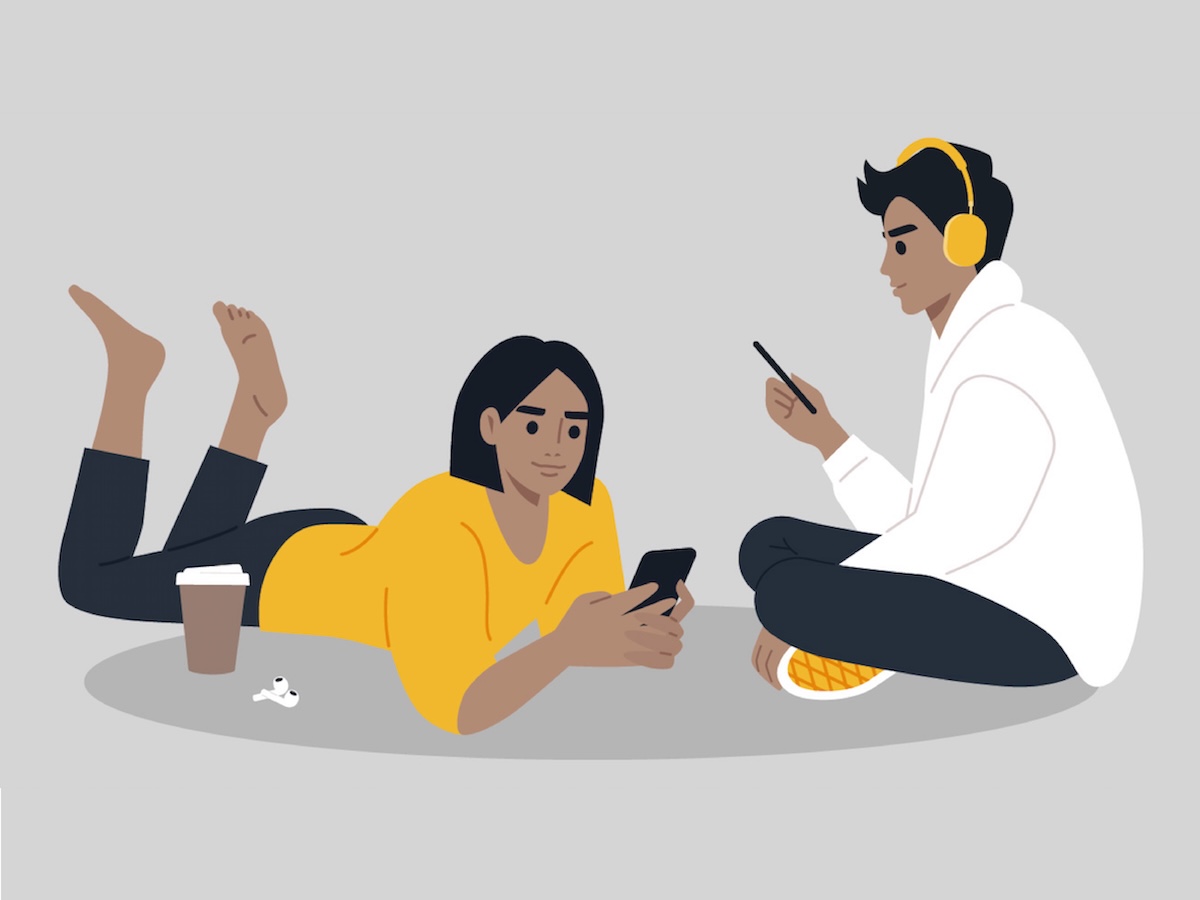April 23, 2025

Technology has made life easier in many ways. But it can also be a pain in the neck — literally. More than 60% of smartphone users report musculoskeletal pain, primarily affecting the neck and back. Recent research also finds a strong connection between neck pain and time spent on devices.
Chronic neck pain is not a new problem. As long as people have been reading books and sitting at desks, they’ve had neck pain. The difference is that our bodies are now in that flexed position more than ever. Multiple surveys show that the average American spends more than five hours a day on their phone. Add in the time you spend on all other screen devices, and you may be topping more than 15 hours of screen time daily.
“It’s easy to get pulled in,” says Juli Olmsted, a physical therapist at MU Health Care. “And when we do, we aren’t really aware of our position because we are so engrossed in what’s happening on the screen.”
The problem is that hunching over your phone or device for too long can take a toll. The result is chronic pain and discomfort, commonly referred to as “tech neck.”
What Is Tech Neck?
Tech neck, also called text neck, is poor posture that develops from too much screen time. Whether you’re bending over your phone on the couch or leaning in to be heard on a video call for work, it’s easy for the upper body to become misaligned. Sitting in a flexed position has physical impacts that can affect your neck, shoulders and lower back.
Your body may be feeling the strain of tech neck if you have:
- Aching pain in your back
- Headaches
- Widespread pain and stiffness in the neck and shoulders
Kids and teens, who can also develop tech neck, have bodies that are more adaptable and therefore may take longer to develop signs and symptoms. As a result, poor posture can show itself in different ways, including:
- Headaches
- Neck tightness and pain
“If kids develop poor screen time posture early in life, they are likely going to carry it into adulthood,” Olmsted says. “That’s when chronic back, neck and shoulder pain could start.”
How to Prevent Tech Neck
The obvious way to avoid tech neck is to ditch screen time altogether. But if your work or school requires time on a computer or device, that’s not a realistic solution. Besides, who are we kidding? We’re not giving up our phones.
It is possible, however, to take some proactive action to reduce the impact of screen time strain. Olmsted recommends three things:
1. Fix Screen Time Positioning
The strain and chronic pain associated with tech neck result from poor posture while using your devices. Properly supporting your body can help reduce the strain.
“Let’s think about our general posture. It’s critical to start with a good lower back position,” Olmsted says. “That’s the foundation for the rest of your spine, as well as your head and neck.”
If you work at a desk, run through a quick position checklist:
- Are your shoulders back and open? Rounding your shoulders pulls on the tendons in your neck and upper back.
- Is your head in line with your shoulders? Leaning forward leaves shoulder and chest muscles tight and puts added strain on your spine.
- Is your screen at eye level? If not, you may be straining your neck muscles, which can also contribute to headaches.
Remember, though, time at your desk may only account for a fraction of the time you spend looking at a device. You also need to consider your body position during recreational screen time, such as when you are sitting on the couch or lounging in bed.
“We tend to be more posture aware when we are at a workstation or using a bigger screen,” Olmsted says. “Take what you know about ergonomic positioning and find ways to apply it to other times you use your phone.”
She notes that you may need to get creative. A few things to pay special attention to:
- Seat depth: Use a pillow to bring the back of the sofa or recliner closer to the front so you are seated more upright.
- Lower back support: Use a small pillow or folded towel behind your lumbar spine to give it more support.
- Phone level: Pay attention to where your arms are. Use pillows under your arms to help raise the device toward your eyes. If you’re watching videos, consider casting them onto your television to keep your viewing at eye level.
2. Perform Tech Neck Stretches
Any time you stay in one position for too long, your muscles tighten. Olmsted recommends a couple of ways to implement stretching and avoid tightness:
- Get up and walk for a few minutes every hour: As you’re walking, several things are happening. Your hips open. Your trunk moves. Your arms swing. Your eyes are up. You turn your head. All these small movements stretch the areas that tighten when you sit.
- Stretch your chest: Once a day, deeply stretch your chest. Approach a corner or narrow doorway. Brace your arms and elbows against each wall or side of the doorway, and let your chest and shoulders come forward. Hold the stretch for 30 seconds and do it a couple of times.
- Stretch your neck: Stand tall, take a breath and gently stretch your neck to each side. Then look up for a couple breaths and down for a couple of breaths.
“It doesn’t matter when you stretch each day, as long as you do it,” Olmsted says. “Whenever you have a few minutes or think about it is the perfect time.”
3. Do Strengthening Exercises to Improve Posture
Poor posture and time spent in a flexed position weaken your shoulders, neck and back. “Strengthening the muscles in those areas will counteract the weakness caused by poor posture,” Olmsted says.
You can strengthen the back, neck and shoulders with exercises such as seated rows, lat pulldowns and rotator cuff exercises. It doesn’t matter whether you use gym equipment, dumbbells, bands or just body weight. The key is finding exercises that you enjoy and will do consistently.
“If those areas are really weak and you need guidance, seek a physical therapist,” Olmsted says. “They can guide you through a progression of exercises and offer ideas for stretching.”
When to See a Medical Professional for Tech Neck
Contact your primary care provider if you or your child have ongoing symptoms, such as:
- Headaches that become more frequent or severe
- Numbness or tingling in your arms
- Pain that doesn’t go away and persists at night
- Shooting and sharp pain in your shoulders or neck
To address the underlying problem, you can visit MU Health Care's Spine Center, which has locations in Columbia and Jefferson City. The spine care team can help identify the issue, manage your pain and connect you with physical therapists and chiropractors as needed.
Next Steps and Useful Resources
- Want to discuss more with a primary care doctor? Find one today.
- Think you could benefit from physical therapy? Check out our services.


